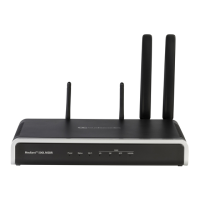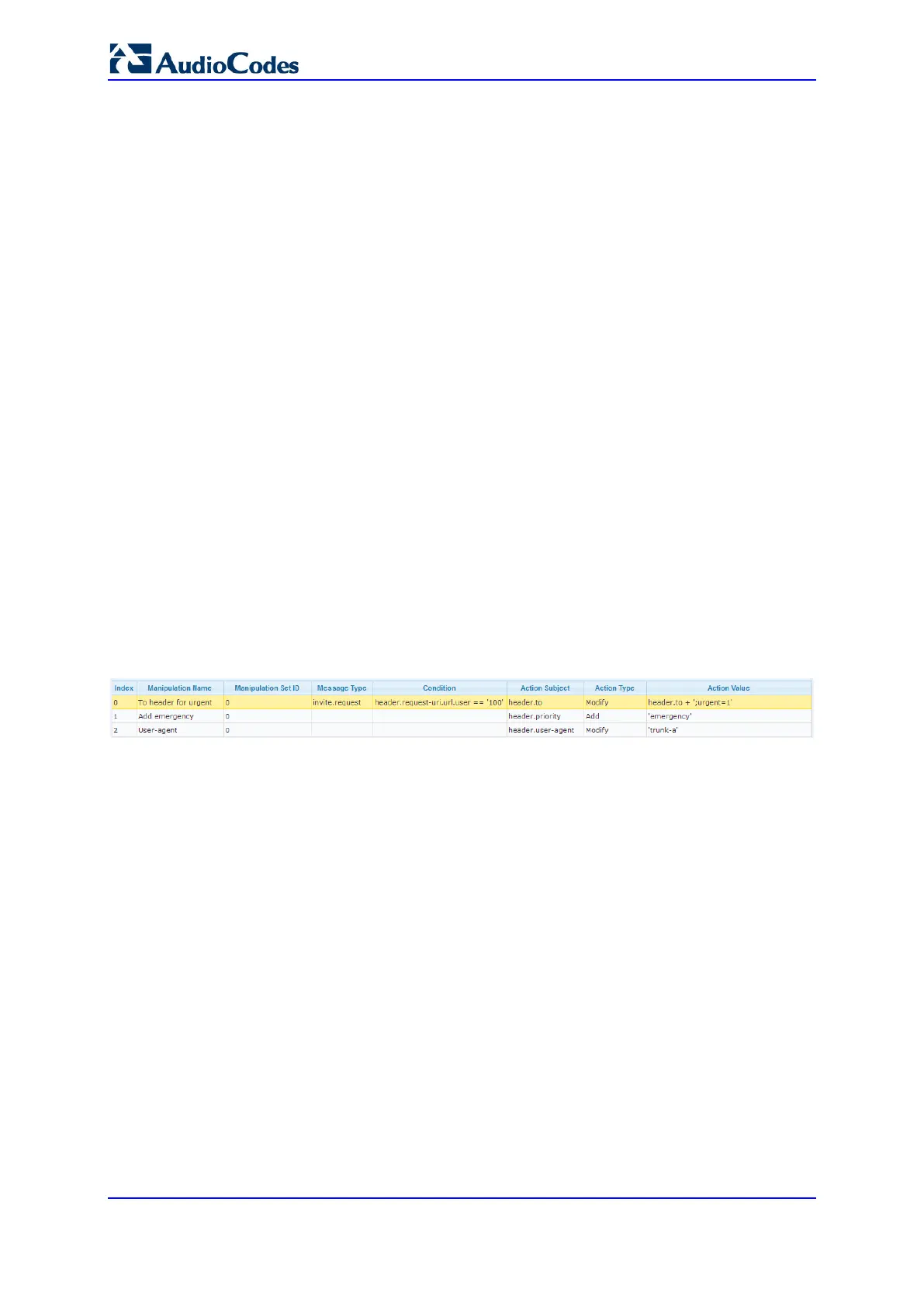User's Manual 314 Document #: LTRT-10466
Mediant 500L MSBR
The device also supports a built-in SIP message normalization feature that can be enabled
per Message Manipulation rule. The normalization feature removes unknown SIP message
elements before forwarding the message. These elements can include SIP headers, SIP
header parameters, and SDP body fields.
The SIP message manipulation feature supports the following:
Manipulation on SIP message type (Method, Request/Response, and Response type)
Addition of new SIP headers
Removal of SIP headers ("black list")
Modification of SIP header components such as values, header values (e.g., URI
value of the P-Asserted-Identity header can be copied to the From header), call's
parameter values
Deletion of SIP body (e.g., if a message body is not supported at the destination
network this body is removed)
Translating one SIP response code to another
Topology hiding (generally present in SIP headers such as Via, Record Route, Route
and Service-Route).
Configurable identity hiding (information related to identity of subscribers, for example,
P-Asserted-Identity, Referred-By, Identity and Identity-Info)
Apply conditions per rule - the condition can be on parts of the message or call’s
parameters
Multiple manipulation rules on the same SIP message
Multiple manipulation rules using the same condition. The following figure shows a
configuration example where rules 1 and 2 ('Row Rule' configured to Use Previous
Condition) use the condition configured for rule 0 ('Row Rule' configured to Use
Current Condition). For more information, see the description of the 'Row Rule'
parameter in this section.
Figure 21-2: Configuration Example of Message Manipulation Rules using Same Condition

